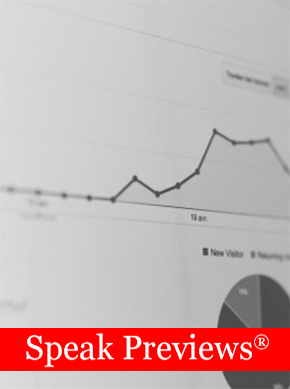Audiences often benefit from a handout that encapsulates a presentation. A handout reminds listeners of the points and messages your presentation put forward and of the evidence you used to support them. It serves as a review that audiences can use as they consolidate your messages, share them with colleagues, or incorporate them into other scenarios.
A handout should be prepared with the same care as a presentation—it is, in many ways, an extension of a presentation, an extension that may reach beyond your immediate audience.
Here are some elements to consider as you develop that reach.
The handout should stand alone, much like the cheese in the children's song. It should make sense both to a person who heard your presentation and to someone who didn't. It should contain the words and graphics that explain your message, telling the same story your presentation told. It should include all identifying information, the occasion for which the presentation was delivered, and all references.
Each section should present the message first.
Many presenters are tempted to just distribute copies of their presentation slides. But your slides are not your presentation—they augment it. You communicate your messages by what you say, so that communication should appear in any handout you create. And while you can and probably should include copies of slides that illustrate your messages or support them, slides alone will not deliver your messages.
The handout should relate to and align with the order of your presentation, include the same messages, pursue the same purpose, present the same data. It may also supply more detailed information that elaborates or expands upon certain points. But the handout shouldn't contain completely new messages; they may dilute the strength of those that drove your presentation or create doubt about their importance.
If related information may help your audience understand or weigh your messages—clinical or case or longitudinal studies, for example, or marketing literature, polls, magazine or journal articles—list them at the end of your handout in a separate section. Chances are good that your audience will appreciate such a list, either because of its novelty or because it's a validating echo of what they are already familiar with.
A handout should be clear and clean, easy to read, and have sufficient white space—not muddled with text or illustrations. Use simple, readable type. Organize and break out dense information into charts, graphs, and other visuals. Use colors. Make it lively.
Your organization may offer help with creating professional handouts or you may already have a template of preference. But additional assistance is only a Google search away; you'll find ideas, models, and apps that can help you design a handout that commands attention.
When to distribute paper handouts to an audience? In general, it's best to give them out after your presentation concludes—otherwise, many in your audience will be leafing through the handout instead of attending to your presentation. In a few cases, you may want to distribute them when your presentation reaches a place of complexity that can be eased by the illustration a handout provides. But unless your audience is small—say, no more than twenty people—the commotion of such an interruption is counter-productive. Better by far to present the illustration through your slides, building one step at a time.
How to distribute handouts? Rather than lugging or mailing a hundred paper copies to your destination, you may wish to take the virtual route. Ask audiences to provide email addresses to which you can send the handout. Or provide your email address so they can request one. Or set up a document repository audiences can access.
In every case, let audience members know that a handout will be available. Then they can focus on your presentation rather than on taking a complete set of notes. That's a gift—both to give and to receive.



